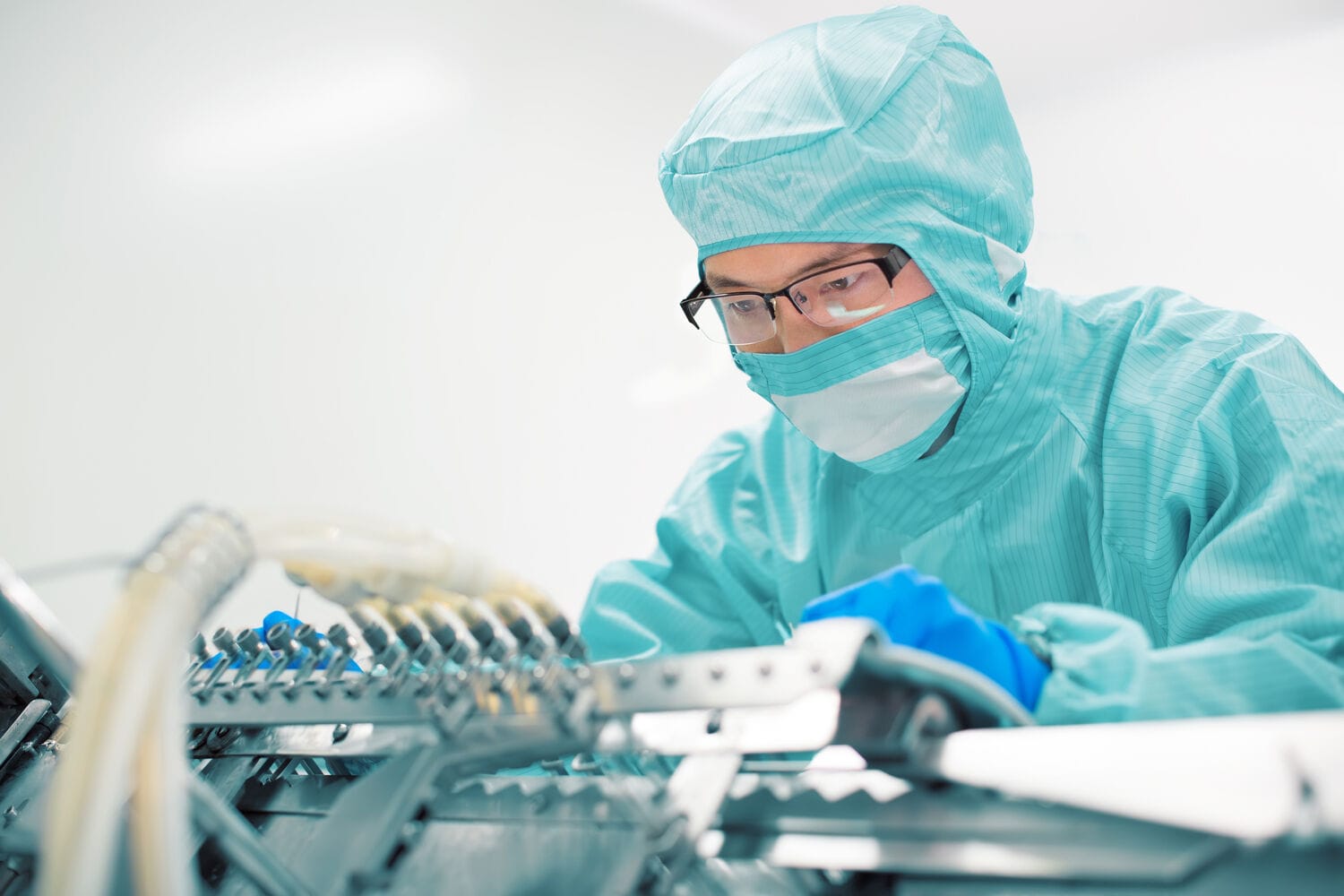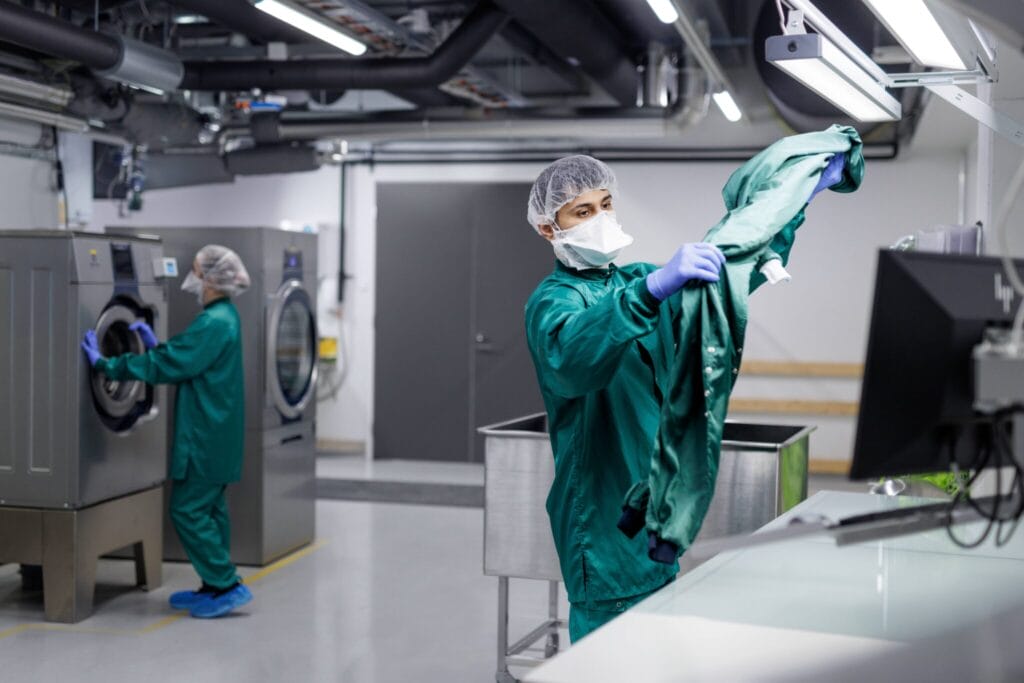
What are the benefits of proper gowning?
In cleanroom environments like pharmaceuticals, biotechnology, and electronics, maintaining strict hygiene and contamination control is non-negotiable. One of the most effective ways to ensure this is through proper gowning. It involves a carefully controlled process of wearing specific garments that help keep particles, fibres, and microbes out of critical environments.
These garments protect not only the cleanroom but also the people working inside. They act as a barrier between the external world and the highly sensitive processes happening within cleanrooms.
Quick Summary: Why Proper Gowning Matters
- Gowning limits contamination and protects workers from harmful exposure.
- Material choice and garment design are key to performance and comfort.
- Following the correct gowning process improves both safety and efficiency.
- Mistakes are avoidable through regular training and support.
- Lindström helps manage cleanroom garment supply, hygiene, and compliance from end to end.
The impact of gowning on workplace safety
Gowning protects employees from direct exposure to hazardous substances and contaminants. In pharmaceuticals, it helps shield workers from active pharmaceutical ingredients (APIs). In healthcare, it minimises the risk of infection. In both cases, it helps reduce workplace incidents and supports a healthier, safer workforce.
It also prevents people from becoming the source of contamination. Human skin, hair, and clothing naturally shed particles. Gowning captures those particles before they can enter clean zones. When staff follow correct gowning procedures, they help maintain a safe and compliant workplace.
What materials and design do good gowns have?
Effective gowning depends on the material and design of the garments. Cleanroom garments are usually made from non-linting, anti-static fabrics. These materials hold particles in rather than letting them escape into the air.
Garments typically include:
- Coveralls or gowns
- Hoods
- Boots or shoe covers
- Gloves
Design also matters. The right garment should be comfortable and allow freedom of movement. If people can wear it properly and comfortably, they are more likely to use it correctly. Lindström helps you with garment choices based on the cleanroom’s grade and the tasks being performed.
The effect of gowning on productivity and efficiency
Contamination events are costly. They lead to cleaning, process delays, or even product recalls. Proper gowning helps prevent these issues by reducing the chance of introducing unwanted particles into the environment.
A clear gowning process also helps create predictable routines. Staff can move confidently through gowning rooms, knowing they are properly protected. This leads to more stable workflows, less downtime, and better focus on core tasks.
When everyone understands and follows gowning procedures, fewer mistakes occur. That means fewer interruptions, higher product quality, and better use of time and resources.
Common mistakes and how to avoid them
Even small missteps in gowning can introduce contamination. Some of the most common issues include:
- Incorrect donning or doffing order: Wearing or removing garments in the wrong sequence can spread contaminants.
- Skipping steps: Leaving out items like gloves or failing to sanitise hands can compromise cleanroom hygiene.
- Poor training: Without regular education, even experienced staff may develop bad habits.
To reduce these risks, companies should offer routine training and conduct regular audits. Visual guides, cleanroom checklists, and signage can also help keep procedures top of mind.
Outsourcing gowning to a reliable partner like Lindström
Lindström provides cleanroom garment services that are reliable, compliant, and easy to manage. Our services include:
- Design and supply of anti-static, non-linting cleanroom garments
- Rental and professional laundering to maintain hygiene and safety standards
- RFID tracking to monitor usage and support garment replacement planning
We tailor solutions based on your cleanroom requirements and offer support that fits your industry needs. Our goal is to make gowning seamless, so your teams can stay focused on production, quality, and safety.

FAQ – Frequently asked questions about gowning
Proper gowning prevents contaminants like particles and microbes from entering controlled environments, protecting both products and personnel.
Cleanroom garments are typically made from anti-static, non-linting fabrics designed to contain particles and reduce contamination risks.
Gowning creates a protective layer between workers and hazardous substances. It also prevents employees from becoming a source of contamination.
Yes. Improper gowning can lead to contamination events, causing delays, cleanups, or product recalls—all of which affect productivity.
Lindström provides a full-service solution including garment rental, laundering, maintenance, and RFID tracking to ensure clean, compliant gowning at all times.



